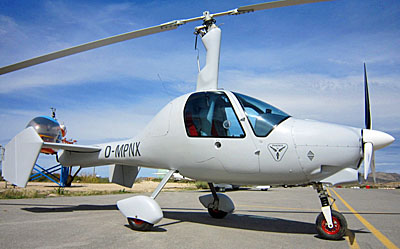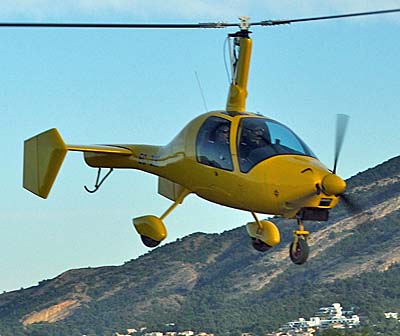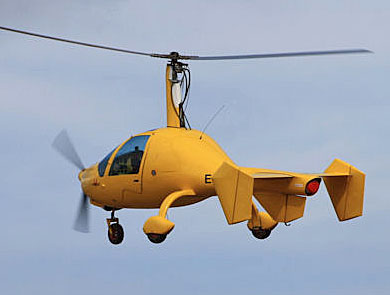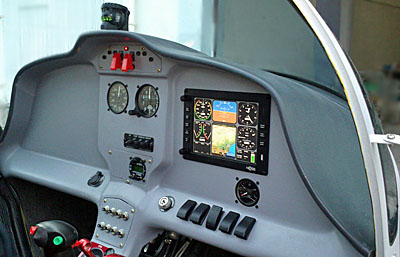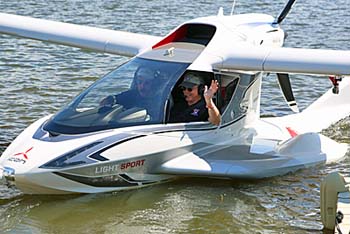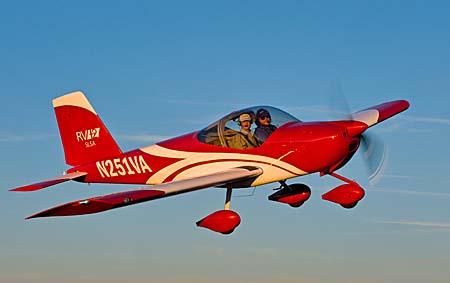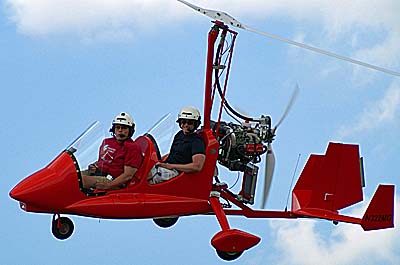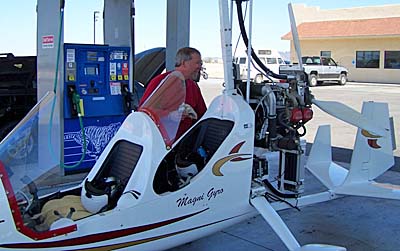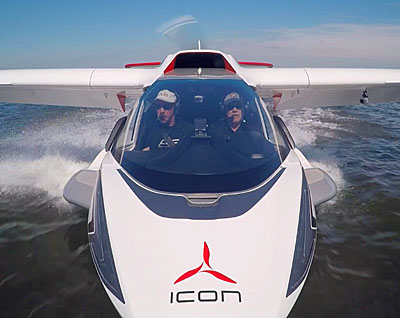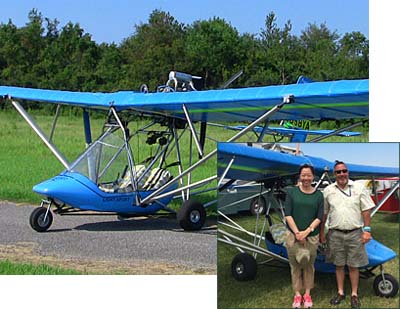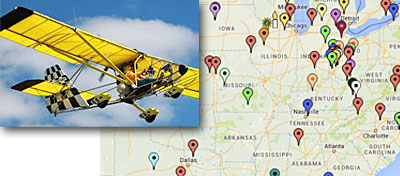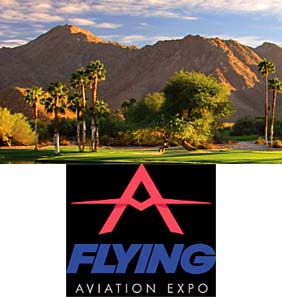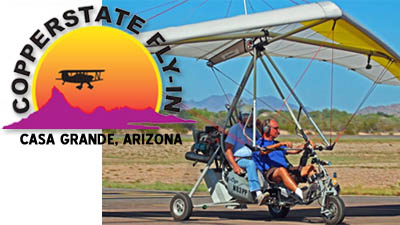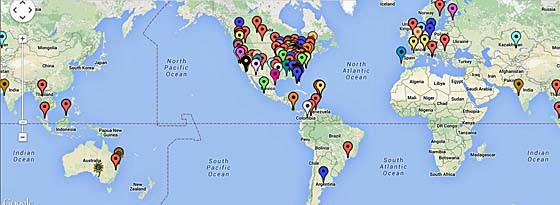
Updated 11/5/15 with video at end … We went. We flew (and flew). We shot video … lots of video. Videoman Dave’s dual hand held cameras got a workout as did our six Garmin VIRB cameras. We did more of our popular interviews but we also captured multiple angles on several aircraft as we continue to build our expanding library of VPRs or Video Pilot Reports. Nearly always hard at work on terra firma, Dave went aloft (photo) to get some air and to capture aerial images. Dave took a seat in the twin-engined AirCam with company designer and boss, Phil Lockwood so you can see Copperstate 2016 from the air. Honestly, I can hardly imagine how Dave keeps track of those hours and hours of video much less organize them into the productions you enjoy to the tune of 1.5 million minutes a month of viewing.




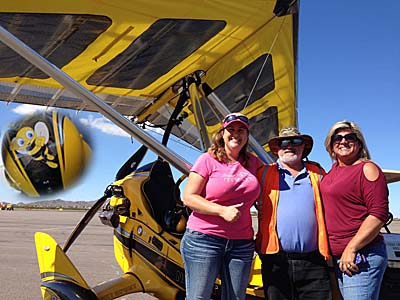
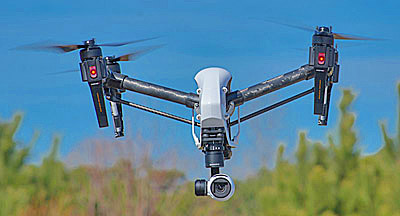 I believe we can capture great video, for example, of airplanes taking off in ways not possible with either ground-based cameras or via air-to-air photography. Love them or hate them, drones can produce certain images that are simply not possible any other way. Plus, I wanted to investigate and learn about this new range of aircraft.
My primary goal is to take my drone to airshows and, after securing permission from the show organizer, use it to give you a better perspective. When it can be used safely, a drone should allow more intriguing viewpoints of Light-Sports, light kits, or ultralights during take off and landing.
Not long ago, I acquired a
I believe we can capture great video, for example, of airplanes taking off in ways not possible with either ground-based cameras or via air-to-air photography. Love them or hate them, drones can produce certain images that are simply not possible any other way. Plus, I wanted to investigate and learn about this new range of aircraft.
My primary goal is to take my drone to airshows and, after securing permission from the show organizer, use it to give you a better perspective. When it can be used safely, a drone should allow more intriguing viewpoints of Light-Sports, light kits, or ultralights during take off and landing.
Not long ago, I acquired a  Drone Source proprietor Ron Bishop wisely counseled my use of prop guards as I learned to fly the Phantom. The good news is that if you let go at any time and don't bump the two joy sticks (one for throttle and yaw; the other for fore/aft, right/left), Vision 2+ will hover smoothly and hold altitude and position until you give it a further command.
Phantom is remarkably smart. Should you lose radio signal, Vision+ rises to about 55 feet, above common obstacles, and then will fly back to the launch point completely on its own. You can program the Phantom to autonomously (without human input) fly a course of up to 16 waypoints. If the battery gets low Vision 2+ comes home and lands without input. All this costs about $1,000 and prices will inevitably fall as drones develop at "Internet speed."
"The world's largest retailer by revenue recently asked the FAA for permission to use outdoor unmanned aircraft to test everything from package delivery to inventory management," reported the Wall Street Journal. "Wal-Mart's interest in drones [follows] ... industries such as farming, filmmaking, and construction."
Drone Source proprietor Ron Bishop wisely counseled my use of prop guards as I learned to fly the Phantom. The good news is that if you let go at any time and don't bump the two joy sticks (one for throttle and yaw; the other for fore/aft, right/left), Vision 2+ will hover smoothly and hold altitude and position until you give it a further command.
Phantom is remarkably smart. Should you lose radio signal, Vision+ rises to about 55 feet, above common obstacles, and then will fly back to the launch point completely on its own. You can program the Phantom to autonomously (without human input) fly a course of up to 16 waypoints. If the battery gets low Vision 2+ comes home and lands without input. All this costs about $1,000 and prices will inevitably fall as drones develop at "Internet speed."
"The world's largest retailer by revenue recently asked the FAA for permission to use outdoor unmanned aircraft to test everything from package delivery to inventory management," reported the Wall Street Journal. "Wal-Mart's interest in drones [follows] ... industries such as farming, filmmaking, and construction."
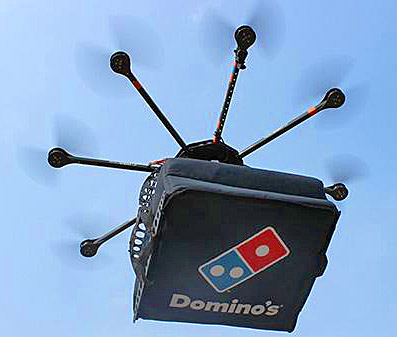 Amazon, Google, and DHL are testing drones for the final leg of package delivery, often said to be the most inefficient and expensive part of delivery logistics. Although the agency seemed to move lethargically at first, FAA has established a new office headed up by former EAA LSA champion, Earl Lawrence. Things are moving faster now. Wall Street Journal reported, "FAA has issued more than 2,000 approvals in the past year to use drones commercially and the agency has recently accelerated such approvals."
Cool as flying and using drones may be, it is increasingly more complicated as authorities insert themselves. Purchase prices are the least of your concerns. My drone ran a bit north of $1,000 and you can spend $3-10,000 for more professional units. This pales in comparison to shooting photos with a helicopter.
However, if you want to use a drone professionally, to be paid for the images you create, you will need a 333 Exemption. I am currently in this process with assistance from others. Typical of efforts to gain a license or other government approval, the task is tedious at best.
Next you'll need to obtain a pilot's license if you don't already have one. Powered Parachute instructor and Designated Pilot Examiner, Roy Beisswenger, has had a busy summer training pilots who seek to fly drones to, for example, take real estate photos. The fastest way to a Sport Pilot certificate is through powered parachutes, which require only 12 hours (assuming good aptitude).
Now, FAA wants to register drones ... sigh! OK, I'll do it all and perhaps all the regulatory steps will bring order and enhance safety. Certainly, I'll learn a lot. Fortunately, it is quite enjoyable to fly one of these things and the FPV is exceptional. The resulting images are excellent. Watch for some good visuals on this website and in our videos. Drone on ...
Amazon, Google, and DHL are testing drones for the final leg of package delivery, often said to be the most inefficient and expensive part of delivery logistics. Although the agency seemed to move lethargically at first, FAA has established a new office headed up by former EAA LSA champion, Earl Lawrence. Things are moving faster now. Wall Street Journal reported, "FAA has issued more than 2,000 approvals in the past year to use drones commercially and the agency has recently accelerated such approvals."
Cool as flying and using drones may be, it is increasingly more complicated as authorities insert themselves. Purchase prices are the least of your concerns. My drone ran a bit north of $1,000 and you can spend $3-10,000 for more professional units. This pales in comparison to shooting photos with a helicopter.
However, if you want to use a drone professionally, to be paid for the images you create, you will need a 333 Exemption. I am currently in this process with assistance from others. Typical of efforts to gain a license or other government approval, the task is tedious at best.
Next you'll need to obtain a pilot's license if you don't already have one. Powered Parachute instructor and Designated Pilot Examiner, Roy Beisswenger, has had a busy summer training pilots who seek to fly drones to, for example, take real estate photos. The fastest way to a Sport Pilot certificate is through powered parachutes, which require only 12 hours (assuming good aptitude).
Now, FAA wants to register drones ... sigh! OK, I'll do it all and perhaps all the regulatory steps will bring order and enhance safety. Certainly, I'll learn a lot. Fortunately, it is quite enjoyable to fly one of these things and the FPV is exceptional. The resulting images are excellent. Watch for some good visuals on this website and in our videos. Drone on ...
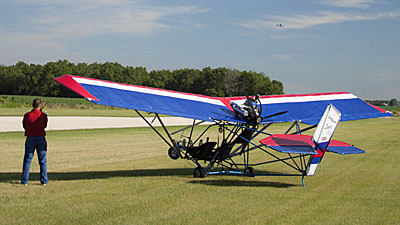
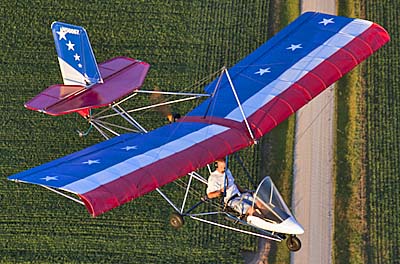
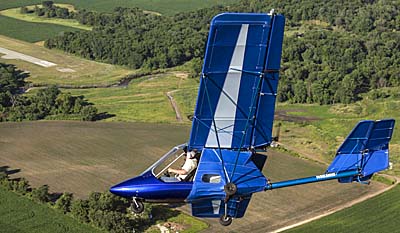
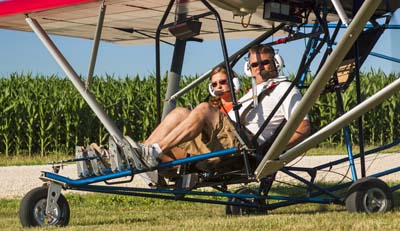

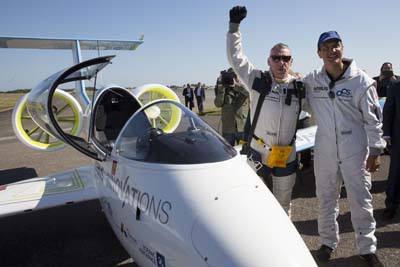
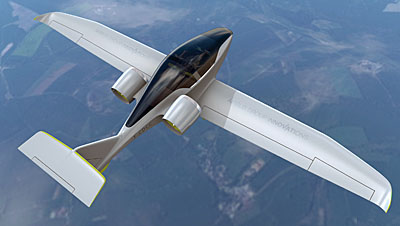
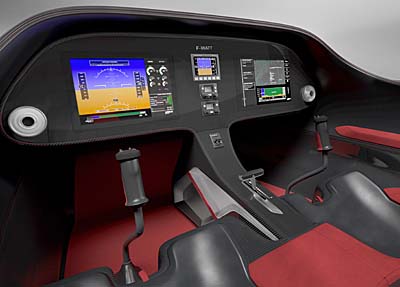
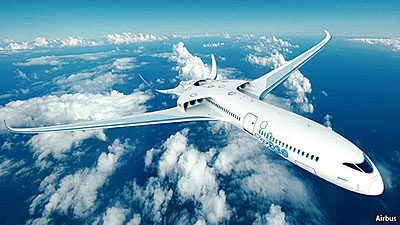

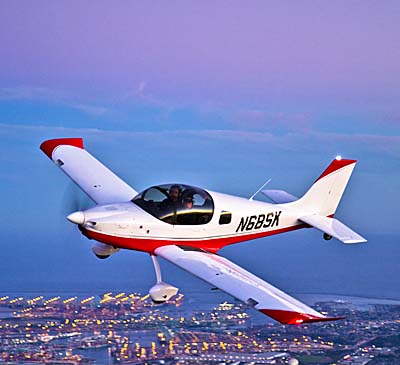 If you haven't checked out this cool feature, you should do so. You can click on and off more than 20 different aircraft characteristics, all simple yes-or-no type entries. As you do so, the "Matching List" changes to show the aircraft that meet your criteria. From that list you'll see links that let you read more content (written and video) available on this website. You must register to use PlaneFinder 2.0 (your email is all that is required and after you do so we'll send you a regular English-word password that you can change), however, PlaneFinder 2.0 is completely free, like most of our content. Go have fun!
Many LSA are available as nose wheel, tricycle gear airplanes. Some are taildraggers. Some go both ways. If you're not sure about your ability to fly a taildragger I have two things to say: (1) LSA taildraggers are not that challenging to fly for a variety of reasons (some of which I'll mention below), and, (2) taildraggers look so cool.
If you haven't checked out this cool feature, you should do so. You can click on and off more than 20 different aircraft characteristics, all simple yes-or-no type entries. As you do so, the "Matching List" changes to show the aircraft that meet your criteria. From that list you'll see links that let you read more content (written and video) available on this website. You must register to use PlaneFinder 2.0 (your email is all that is required and after you do so we'll send you a regular English-word password that you can change), however, PlaneFinder 2.0 is completely free, like most of our content. Go have fun!
Many LSA are available as nose wheel, tricycle gear airplanes. Some are taildraggers. Some go both ways. If you're not sure about your ability to fly a taildragger I have two things to say: (1) LSA taildraggers are not that challenging to fly for a variety of reasons (some of which I'll mention below), and, (2) taildraggers look so cool.
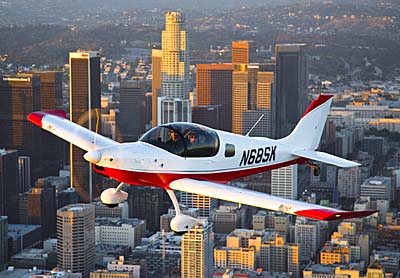 So, I don't know about you but when I heard about the
So, I don't know about you but when I heard about the 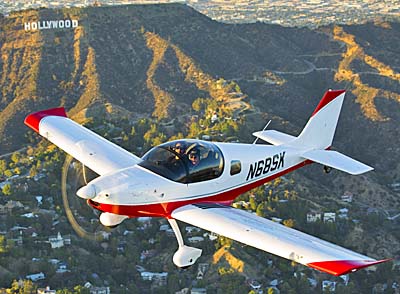 For those that may be new to taildraggers, a ground loop is not really a "loop" in the common aeronautical use of that word. It means that, due to the mass of aircraft aft of the main gear, should the pilot let the tail end move too far toward either side with some element of momentum in that movement, the tail can come more aggressively to the side.
With a high wing or low, a sideways moving tail can cause a wing tip to strike the ground, whether somewhat gently or more forcefully. When a wingtip located far from the aircraft center of mass drags on the ground, leverage causes even more movement the wrong way and that can result in quite a twirl on the ground ... the "ground loop."
Usually the damage is not too significant and it is the pilot's ego that is more seriously wounded. However, with enough force and speed involved, it can be quite a bit worse. Being relatively light aircraft usually landing at fairly slow speeds, and often having a lower deck angle — meaning the nose is not particularly high compared to the horizontal — LSA ground loops are much less likely and not as much bad stuff happens when one occurs.
The solution, instilled by a quality taildragger checkout from a knowledgeable instructor or experienced pilot, often involves what is called "happy feet." If you keep your feet moving on the rudder pedals — using a series of small regular movements, to prevent the tail from getting too far to one side or the other — the ground loop is easily avoided. On something like a DC-3 this is a very big deal. On most LSA, it simply shouldn't dissuade you from trying a taildragger. Did I mention they look SO cool?
Until I can fly Sling taildragger, I'm happy to pass along Matt's further comments.
For those that may be new to taildraggers, a ground loop is not really a "loop" in the common aeronautical use of that word. It means that, due to the mass of aircraft aft of the main gear, should the pilot let the tail end move too far toward either side with some element of momentum in that movement, the tail can come more aggressively to the side.
With a high wing or low, a sideways moving tail can cause a wing tip to strike the ground, whether somewhat gently or more forcefully. When a wingtip located far from the aircraft center of mass drags on the ground, leverage causes even more movement the wrong way and that can result in quite a twirl on the ground ... the "ground loop."
Usually the damage is not too significant and it is the pilot's ego that is more seriously wounded. However, with enough force and speed involved, it can be quite a bit worse. Being relatively light aircraft usually landing at fairly slow speeds, and often having a lower deck angle — meaning the nose is not particularly high compared to the horizontal — LSA ground loops are much less likely and not as much bad stuff happens when one occurs.
The solution, instilled by a quality taildragger checkout from a knowledgeable instructor or experienced pilot, often involves what is called "happy feet." If you keep your feet moving on the rudder pedals — using a series of small regular movements, to prevent the tail from getting too far to one side or the other — the ground loop is easily avoided. On something like a DC-3 this is a very big deal. On most LSA, it simply shouldn't dissuade you from trying a taildragger. Did I mention they look SO cool?
Until I can fly Sling taildragger, I'm happy to pass along Matt's further comments.
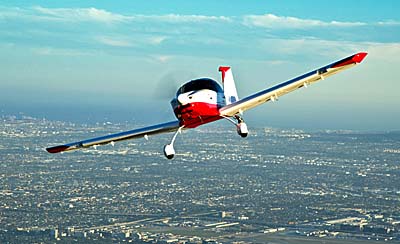 "During taxi, the Sling Taildragger provides sufficient visibility down the runway to see straight ahead without S-turning," said Matt. He elaborated, "The gear geometry is such that when the tail comes up on the takeoff roll, the aircraft remains extremely steady on the runway, with very little steering input required.
"In flight she shares the same light control harmony that the standard Sling has, since it is the same airplane. Three-point landings are a breeze in the Sling Taildragger and control is easily maintained on the rollout.
"The Sling LSA Taildragger [sells for] approximately the same price as the Sling LSA (starting at $135,000), but the gorgeous lines of the Sling are accentuated by the aggressive nose-up stance on the ground.
All photos with this article were captured by photographer Evan Byrne, whom interested parties can contact at his aerial photography
"During taxi, the Sling Taildragger provides sufficient visibility down the runway to see straight ahead without S-turning," said Matt. He elaborated, "The gear geometry is such that when the tail comes up on the takeoff roll, the aircraft remains extremely steady on the runway, with very little steering input required.
"In flight she shares the same light control harmony that the standard Sling has, since it is the same airplane. Three-point landings are a breeze in the Sling Taildragger and control is easily maintained on the rollout.
"The Sling LSA Taildragger [sells for] approximately the same price as the Sling LSA (starting at $135,000), but the gorgeous lines of the Sling are accentuated by the aggressive nose-up stance on the ground.
All photos with this article were captured by photographer Evan Byrne, whom interested parties can contact at his aerial photography 

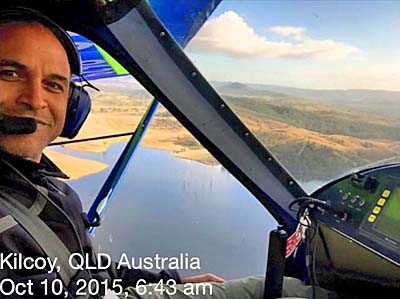
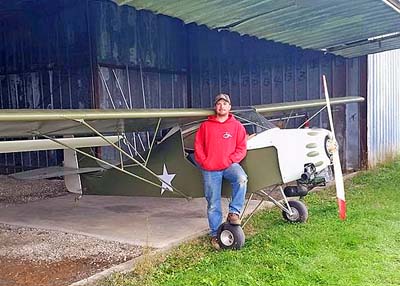
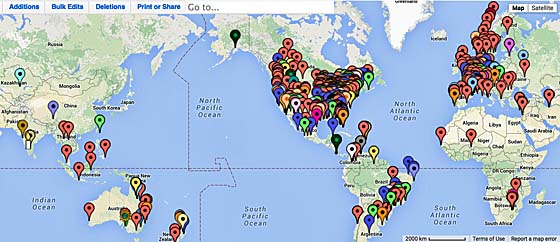

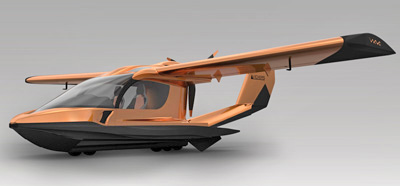


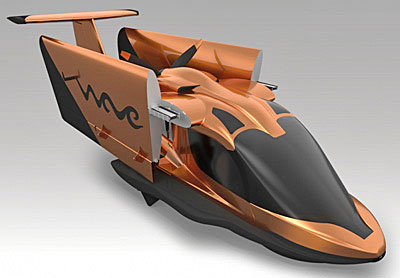

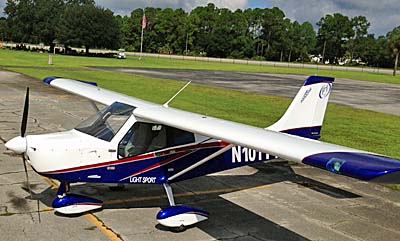 I'll get into the aircraft changes in a moment but first let me remind you what
I'll get into the aircraft changes in a moment but first let me remind you what 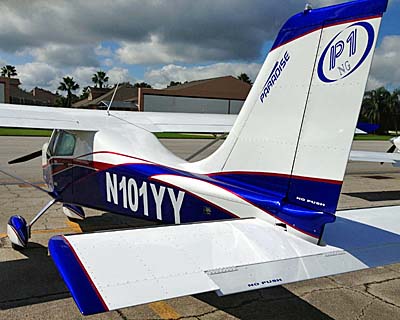 After announcing this decision in January 2015 and moving some initial aircraft to Sebring, things went quiet. At a local EAA chapter meeting at my home airport of Spruce Creek (7FL6), I was asked by a couple about Paradise and why no more news was forthcoming. A call to main U.S. representative Bert Motoyama ended up producing a visit with a chance to fly the newest model, P1NG.
Bert and his associate Randy "RW" Burnley flew up and, over coffee, explained that they had to prove their operation to FAA before they could proceed which overall effort took more time than anticipated. The reason relates to the planned assembly of Brazilian fabricated aircraft. As Sebring will substantially participate in the manufacturing effort, FAA regarded the operation as a "remote manufacturer" resulting in a more detailed examination. Bert and RW prepared carefully and successfully passed the review.
After announcing this decision in January 2015 and moving some initial aircraft to Sebring, things went quiet. At a local EAA chapter meeting at my home airport of Spruce Creek (7FL6), I was asked by a couple about Paradise and why no more news was forthcoming. A call to main U.S. representative Bert Motoyama ended up producing a visit with a chance to fly the newest model, P1NG.
Bert and his associate Randy "RW" Burnley flew up and, over coffee, explained that they had to prove their operation to FAA before they could proceed which overall effort took more time than anticipated. The reason relates to the planned assembly of Brazilian fabricated aircraft. As Sebring will substantially participate in the manufacturing effort, FAA regarded the operation as a "remote manufacturer" resulting in a more detailed examination. Bert and RW prepared carefully and successfully passed the review.
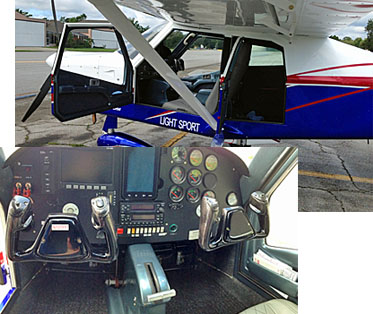 Because of a punishing 35% export tax, Paradise will send airframes which the Sebring group will complete. They'll add many components including the engine as less value shipped from Brazil lowers their tax bill. This makes sense and it is also efficient to source many American parts in-country rather than ship them back and forth.
After the business discussion, RW invited me to go fly with him and I jumped at the chance. It's been a few years since I flew the earlier Paradise P1 and I anticipating renewing the experience. Our video below (or
Because of a punishing 35% export tax, Paradise will send airframes which the Sebring group will complete. They'll add many components including the engine as less value shipped from Brazil lowers their tax bill. This makes sense and it is also efficient to source many American parts in-country rather than ship them back and forth.
After the business discussion, RW invited me to go fly with him and I jumped at the chance. It's been a few years since I flew the earlier Paradise P1 and I anticipating renewing the experience. Our video below (or  The door windows are no longer shaped with a teardrop cut-out, but the overall window area is larger, aiding visibility. The plexiglass is also bowed or bubbled out to give more room inside.
Paradise has always had a quality interior finish, but P1NG is even more polished with an automobile-like interior. What dominates your view, though, is the dual yokes. While most LSA elect joysticks (that many of us admittedly like), yokes are the most common control in aviation, which may ease the transition of Cessna and Piper pilots to Light-Sport. Some argue you have more lateral control with a yoke than with a joystick that can bump into your legs on full deflection.
The interior is roomy up front, but it's the aft cabin that sets P1NG apart from most other aircraft, somewhat resembling the volume of a
The door windows are no longer shaped with a teardrop cut-out, but the overall window area is larger, aiding visibility. The plexiglass is also bowed or bubbled out to give more room inside.
Paradise has always had a quality interior finish, but P1NG is even more polished with an automobile-like interior. What dominates your view, though, is the dual yokes. While most LSA elect joysticks (that many of us admittedly like), yokes are the most common control in aviation, which may ease the transition of Cessna and Piper pilots to Light-Sport. Some argue you have more lateral control with a yoke than with a joystick that can bump into your legs on full deflection.
The interior is roomy up front, but it's the aft cabin that sets P1NG apart from most other aircraft, somewhat resembling the volume of a 
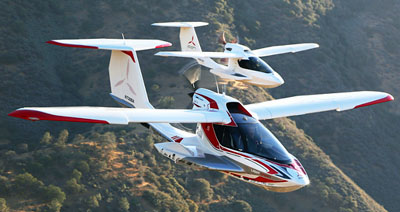
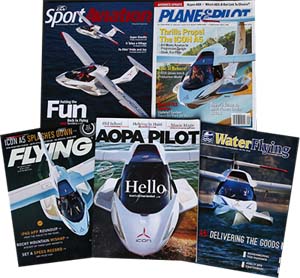
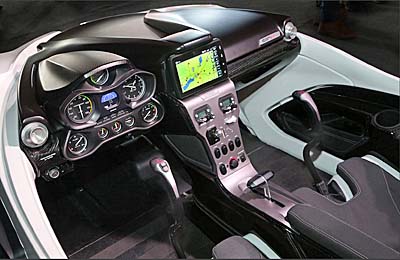
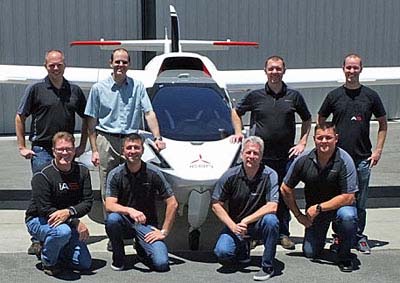
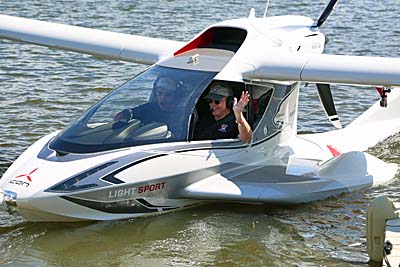

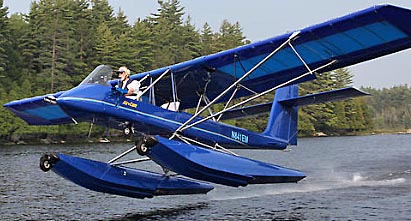


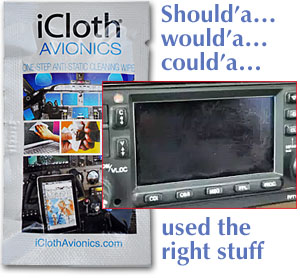


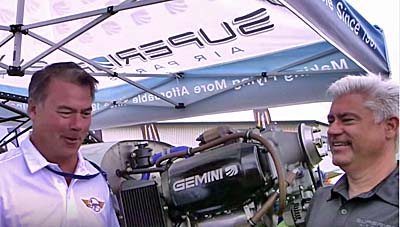

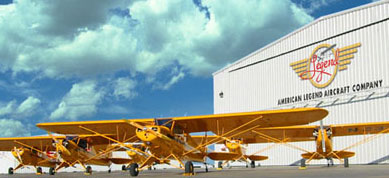

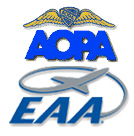
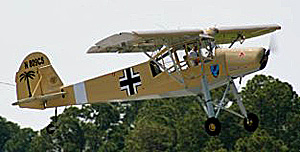

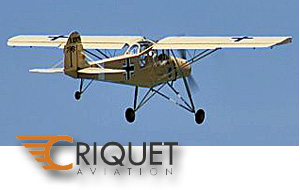

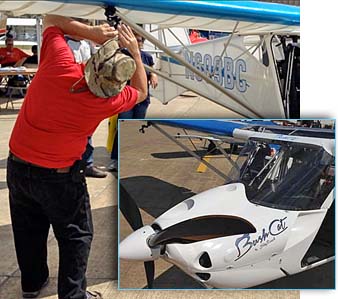


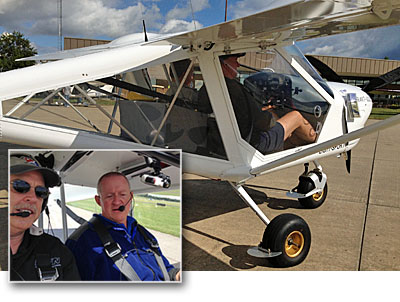

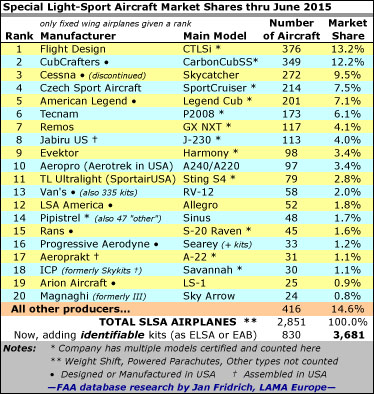

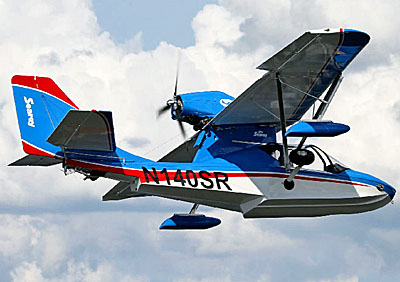

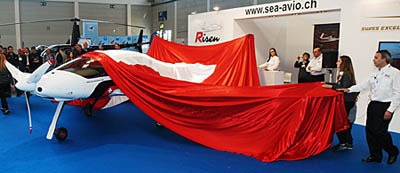 In this newest posted video, you see the gorgeous Risen from
In this newest posted video, you see the gorgeous Risen from 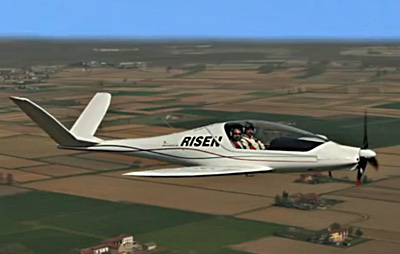 As they are done and as I get the time to post them, I will advise you of new ones of interest. However, before I do that you can find many of the new ones plus all the earlier ones on the
As they are done and as I get the time to post them, I will advise you of new ones of interest. However, before I do that you can find many of the new ones plus all the earlier ones on the 
